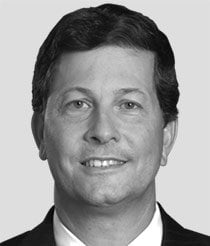Last week we talked about the overall importance of beliefs.
I told you about the systematic application of winning beliefs by professional traders in The Wall Street Journal's pros versus dartboard competition.
You'll recall that through 100 contests, the pros' average win was a striking 140% higher than those stocks picked at random, striking a blow against the old academic tenet that markets are random.
I want to give you a guided tour of the beliefs that form the foundation for The 10-Minute Millionaire's systematic approach to trading.
So today, I'm going to show you the individual steps that form the foundation of how we believe the markets work. Think of it as our "beliefs roadmap."
Let's get started...
The 10-Minute Millionaire Beliefs Roadmap
1. Markets are auctions. This a useful first step to our belief system. That's because in the financial markets, just like in auctions, buyers and sellers arrive at a fair price most of the time. But then there are times where emotions run high and people get crazy.
2. Auction markets usually find fair prices, but frequently prices get driven to extremes. During these emotional flights of fancy, people can get into bidding wars and drive the price of an item much higher than what would be considered "normal" or "fair." Likewise, thanks to poor or inaccurate information, a valuable item can receive little interest at an auction, and its price can end up far below what is considered its "true value."
The same thing happens in financial markets - over and over again. Take the case of Shake Shack Inc. (NYSE: SHAK), whose stock soared when expectations and hope were high and traders bid the price up beyond what was reasonable:

We also see the price collapse when reality kicks in. Traders call this kind of move "up one side of the Eiffel Tower and down the other."
3. Extremes happen in all time frames. The Shake Shack example above shows us an extreme that played out over about a year. I call long-term trends that change direction like this "Extreme Turnarounds."
There are other extremes that happen in shorter time frames.
[mmpazkzone name="in-story" network="9794" site="307044" id="137008" type="4"]
In the mid-term time frame, I love strong stocks in strong sectors that have a long-term uptrend and then pull back to a mid-term extreme:

I call these plays "Extreme Continuations," and they happen time and again. They are easiest to find when the broader market is also in an uptrend, but we can find strong sectors in all kinds of market conditions.
There are also "Short-Term Extreme Turnarounds" - trades that I like to call "pop and drops," as you'll see from the chart below. These are the types of trades that bounce off short-term support and resistance levels again and again. Here's a recent example from Air Products and Chemicals Inc. (NYSE: APD):
 4. Extremes snap back, providing profit opportunities. In these time frames - short-, mid-, and long-term extremes want to "snap back," or in statistics-speak - "revert toward the mean." This implies that after people get crazy for a short or extended time, they eventually come to their senses and overvalued stock prices drop while undervalued ones rise again.
4. Extremes snap back, providing profit opportunities. In these time frames - short-, mid-, and long-term extremes want to "snap back," or in statistics-speak - "revert toward the mean." This implies that after people get crazy for a short or extended time, they eventually come to their senses and overvalued stock prices drop while undervalued ones rise again.
This is human nature at its core. This phenomenon of emotionally derived extremes has existed on trading floors for centuries. And as long as human beings remain the same and get crazy from time to time, market extremes will continue to occur. It's one belief we can count on.
So we have a verifiably repeating pattern. We can then systematize the identification of these emotionally driven extremes and use them to profit over and over. We do this by way of our three-step system:
- Find the Extreme
- Frame the Trade
- Book the Profit
Our last instruction for profiting from extremes driven by human emotion is the same one found on your shampoo bottle: Lather. Rinse. Repeat.
Stay tuned - in future articles, we'll dig into the details of each of these beliefs and how we can use them to profit.
This "Secret" Helped Transform Two Teachers into Millionaires: Donna and Dave R. were both teachers in Boston. But today they're retired millionaires who are also earning $10,000 a month in income. Their secret? Much of their wealth is due to a Great Depression-era "program" most have no idea exists. Learn more…
The post How Our Beliefs Give Us a 140% Trading Advantage appeared first on 10-Minute Millionaire.
About the Author
D.R. Barton, Jr., Technical Trading Specialist for Money Map Press, is a world-renowned authority on technical trading with 25 years of experience. He spent the first part of his career as a chemical engineer with DuPont. During this time, he researched and developed the trading secrets that led to his first successful research service. Thanks to the wealth he was able to create for himself and his followers, D.R. retired early to pursue his passion for investing and showing fellow investors how to build toward financial freedom.



